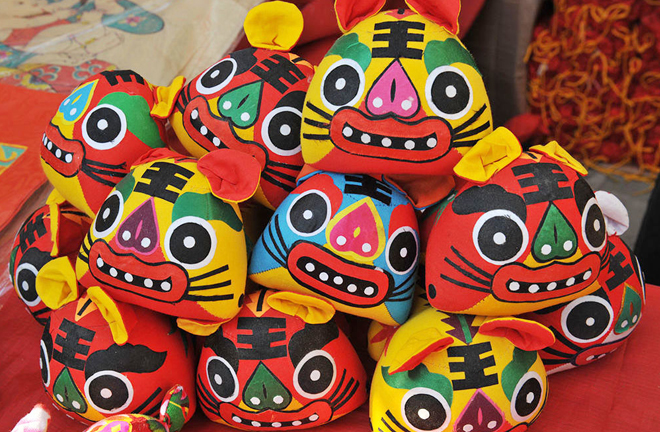Protecting intangible cultural heritage

Intangible cultural heritage such as folk cloth tiger making should improve its modern utility for better develpment. Photo: BAIDU BAIKE
Human heritage includes both tangible forms of heritage, such as buildings, artworks, and utensils for daily use and production, and intangible forms, such as folklore, language, aesthetics and religion.
Zhou Yongming, dean of the Institute for Advanced Studies in Social Sciences at Southern University of Science and Technology, said that as a wide-ranging research field, the study of heritage has strong interdisciplinary characteristics. Specifically, it draws on theories, methodologies and research perspectives of many disciplines, such as history, archaeology, sociology, anthropology, folklore, museology, cultural geography, and the study of law and public policy. While respecting the diversity and integrity of human cultural heritage, the study of heritage should also focus on expanding its international vision and scope.
Gao Bingzhong, a professor at the Department of Sociology at Peking University, said that protecting intangible forms of cultural heritage is the act of discovering beautiful practices in the daily lives of people and passing them down in the name of cultural heritage. As for the reason why the lives of ordinary people and their content sometimes become public cultural heritage, it is not so much because of the implied uniqueness of practices, but because of the carried value, emotion, craftsmanship, memory, and imagination associated with them. Seemingly, the content of these lives is respected and appreciated as intangible cultural heritage. In fact, it is the ordinary people that are respected and appreciated. The vigorous protection of intangible cultural heritage in China benefits from people’s need for respect and appreciation. This is the root cause why the protection of intangible cultural heritage is very welcome in China.
Ma Zhiyao, a professor at the School of International Education at Tianjin University, said that intangible cultural heritage needs to restore its original functions for daily use in modern life. If intangible cultural heritage loses its usefulness, its vitality will gradually fade away. For example, in recent years, many craftsmen have consciously improved the usefulness of folk cloth tiger making and gourd carving. This has made these two forms of intangible cultural heritage survive, innovate and develop.
In 2006, the folk stories of Ancient Yuyan were selected to be added into the first batch of the national-level list of intangible cultural heritage, which has helped the local people in the Liao River estuary better understand the Yuyan culture. Yuyan refers to a special fisherman group in Erjiegou Town near the Liao River estuary, who live a migratory life to catch fish. Jiang Fan, a professor at Liaoning University, said that the Yuyan culture contains rich cultural elements grown from the Liao River estuary area, and the Yuyan people usually narrate their traditions orally to future generations. The Yuyan culture preserves the cultural footprint of this special fishermen group and the historical foundation of the Liao River estuary culture. In recent years, as a representative symbol of the Liao River estuary culture, the Yuyan culture has become a pillar to promote local economic and cultural development.
Since China joined the “Convention for the Safeguarding of the Intangible Cultural Heritage” of the United Nations in 2004, our community has deepened its awareness of intangible cultural heritage, and inheritors at all levels have performed their duties well. Ma said that while stressing the usability of intangible cultural heritage, we should also pay attention to the inheritable nature of such heritage. Lack of innovation can also hinder the protection of intangible cultural heritage.
Gao said that the protection of intangible heritage in China is a huge undertaking, which requires the government, commercial organizations and non-profit organizations to perform their duties respectively. In the future, it is necessary to build a list of representative intangible cultural heritages with Chinese characteristics and a list of representative inheritors.
Jiang said that intangible cultural heritage should actively respond to the needs of society. When protecting intangible cultural heritage, we should also try to transform it into a productive force. Some intangible cultural heritage projects should be integrated into the market economy with a focus on not negatively affecting inheritance. In this way, internal motivation will be stimulated to protect intangible cultural heritage in an orderly way and achieve sustainable development.
edited by YANG LANLAN
